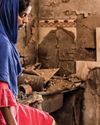Recent excavations raise questions about Mizoram’s history / Communities

Eight years ago, a team from the Indian National Trust for Art and Cultural Heritage travelled to the eastern hills of Mizoram and identified a few potential heritage sites. One of these was in the village of Vangchhia, in Champhai district, where they stumbled across around 170 menhirs—tall, upright stones from prehistoric times—of varying heights. They were embossed with scenes from what appeared to be traditional Mizo hunting practices, and images of Mizo musical instruments and heroes from the community’s legends. In May this year, following an excavation that had begun in January, the Archaeological Survey of India announced that it had found the remains of a lost civilisation.
Vangchhia was not a new discovery for 82-year-old P Rohmingthanga, who has been the convenor of INTACH’s Mizoram branch since 2009. When we met in Delhi this May, he told me he had caught a glimpse of Vangchhia in 1973, while on a helicopter tour during his first deputation as an Indian Administrative Services officer. He recounted seeing a hilltop without any forest cover, and massive erected stones. At the time, Vangchhia had no motorable road connecting it and could only be reached by foot. Rohmingthanga left Mizoram in 1976. Although he returned in the late 1980s as chief secretary, his planned trips to Vangchhia were repeatedly deferred because of the insurgency in the area or road repairs. Two decades on, he decided to pursue his interest in Mizo culture.
This story is from the November 2018 edition of The Caravan.
Start your 7-day Magzter GOLD free trial to access thousands of curated premium stories, and 8,500+ magazines and newspapers.
Already a subscriber ? Sign In
This story is from the November 2018 edition of The Caravan.
Start your 7-day Magzter GOLD free trial to access thousands of curated premium stories, and 8,500+ magazines and newspapers.
Already a subscriber? Sign In

Mob Mentality
How the Modi government fuels a dangerous vigilantism

RIP TIDES
Shahidul Alam’s exploration of Bangladeshi photography and activism

Trickle-down Effect
Nepal–India tensions have advanced from the diplomatic level to the public sphere

Editor's Pick
ON 23 SEPTEMBER 1950, the diplomat Ralph Bunche, seen here addressing the 1965 Selma to Montgomery March, was awarded the Nobel Peace Prize. The first black Nobel laureate, Bunche was awarded the prize for his efforts in ending the 1948 Arab–Israeli War.

Shades of The Grey
A Pune bakery rejects the rigid binaries of everyday life / Gender

Scorched Hearths
A photographer-nurse recalls the Delhi violence

Licence to Kill
A photojournalist’s account of documenting the Delhi violence

CRIME AND PREJUDICE
The BJP and Delhi Police’s hand in the Delhi violence

Bled Dry
How India exploits health workers

Status Update
India’s telling silence on the Hagia Sophia controversy